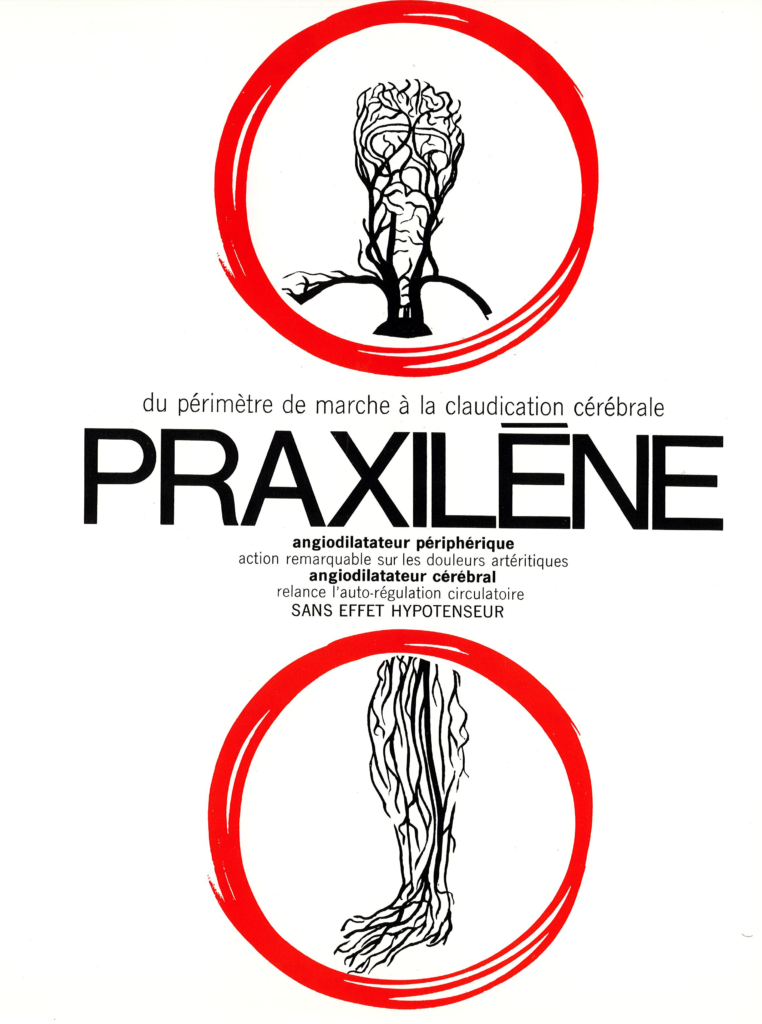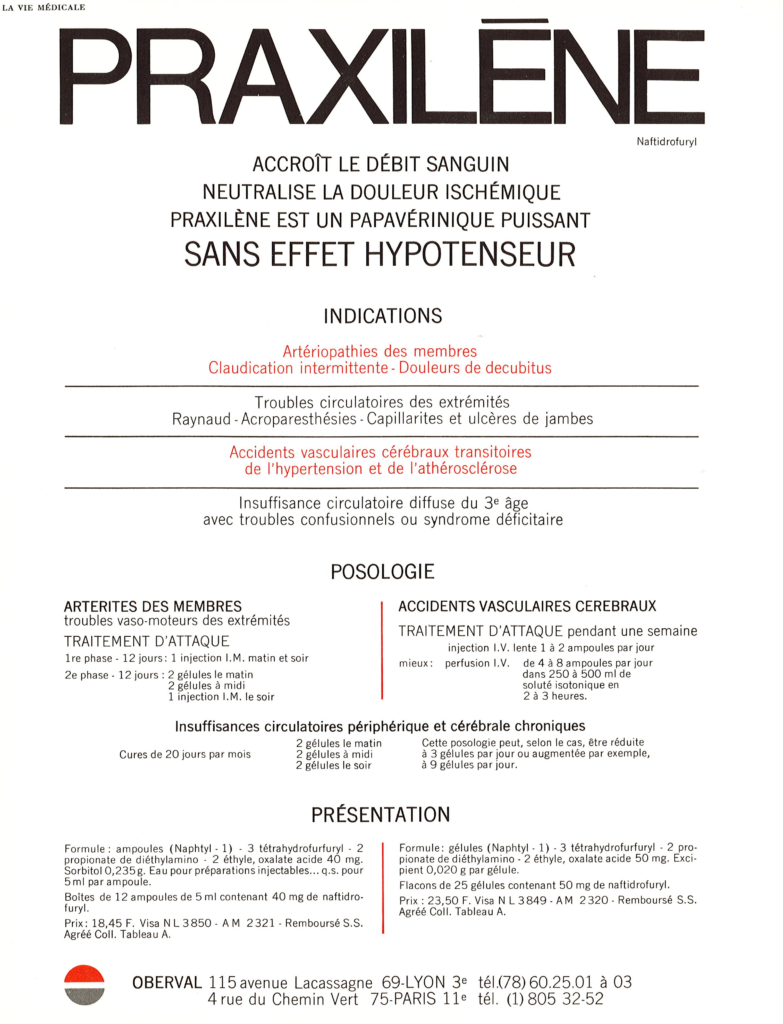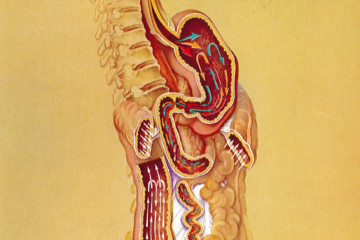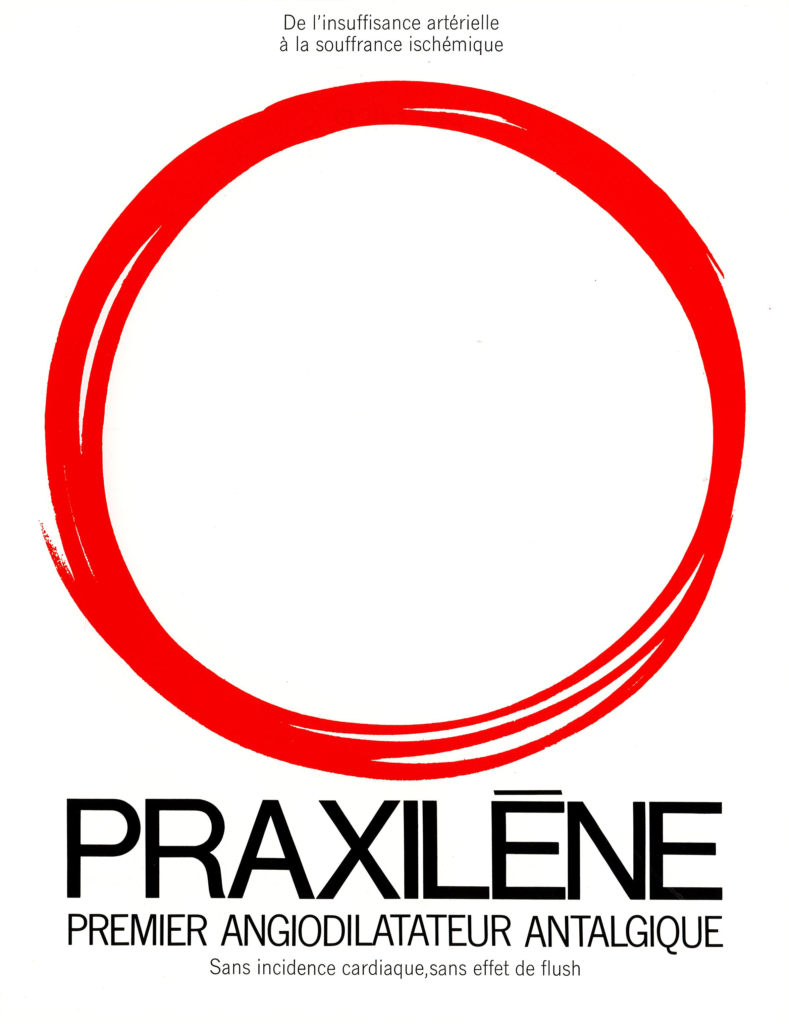
The drug Praxilene® is used for a long time for the treatment of vascular diseases. It is a potent vasodilator used for the management of peripheral and cerebral vascular disorders. This selective antagonist of 5-hydroxytryptamine 2 (5-HT2) receptors is also used to treat intermittent claudication due to peripheral arterial disease.
The active principle of Praxilene®, called naftidrofuryl oxalate, is still considered as a very efficient (and cost-effective) drug for the treatment of peripheral arterial obstructive disease and it is also useful to reduce adverse cardiovascular events such as non-fatal myocardial infarction, stroke and vascular death.
The compound reduces the vasoconstrictive effects of 5-hydroxytryptamine (5-HT) released from the endothelia which is damaged by atherosclerosis and hypoxia. In addition, it inhibits serotonin-induced platelet aggregation and platelet-induced vasospasm. The drug improves blood flow, notably via an increase of erythrocyte deformability and a decrease of their aggregation.
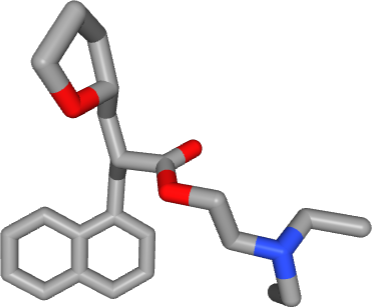
Naftidrofuryl is active orally, initially formulated in ampules or capsules, and now tablets. The drug is well tolerated. The most common adverse events reported were mild gastrointestinal complaints, rarely requiring discontinuation of treatment. The drug is used for more than 40 years in Europe (not approved in the US).
